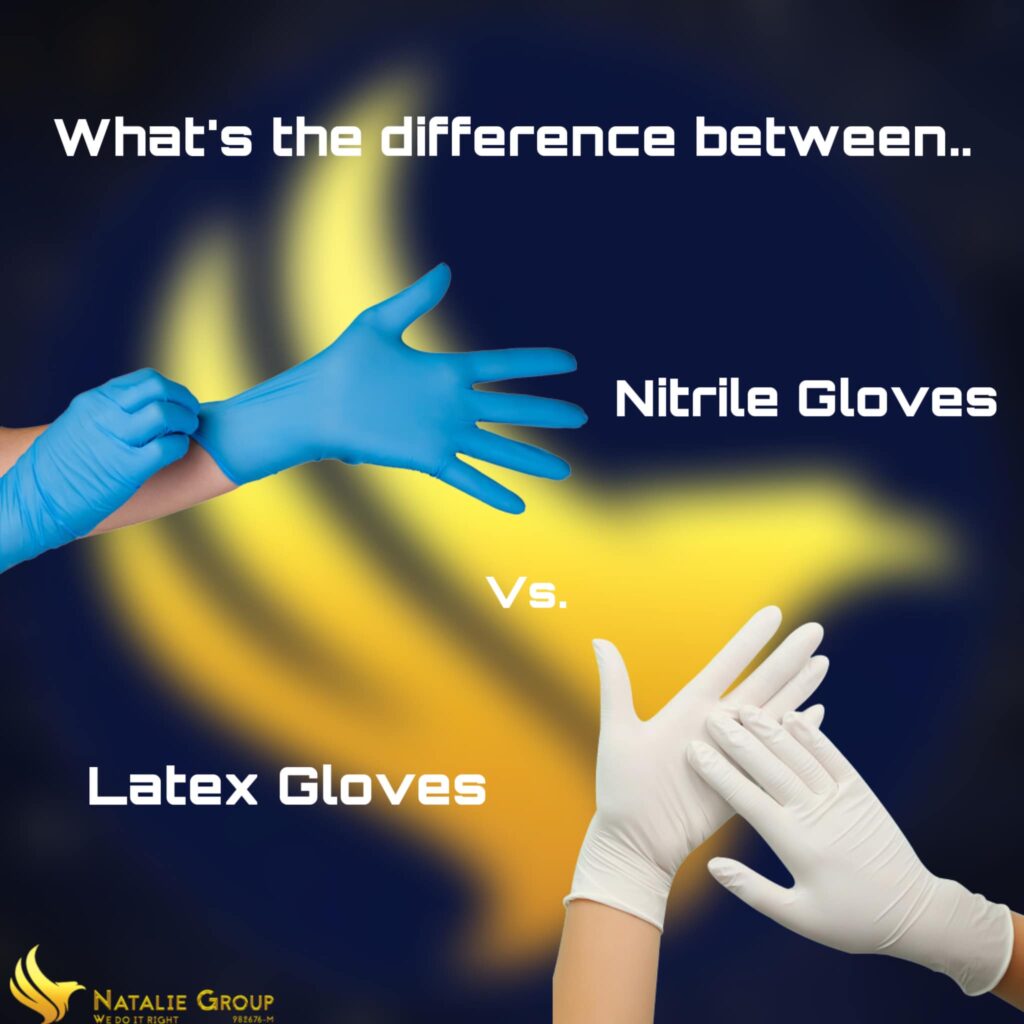Latex and nitrile gloves are two types of disposable gloves commonly used in various industries, including healthcare, food processing, and automotive. While both of them serve the same purpose of protecting hands from harmful chemicals and microorganisms, they have significant differences in terms of their composition, properties, and usage.
Material:
Latex gloves are made from natural rubber latex, while nitrile gloves are made from synthetic rubber. Latex gloves are known for their comfort, fit, and tactile sensitivity, while nitrile gloves are known for their durability, strength, and resistance to punctures, tears, and chemicals. Latex gloves contain latex proteins, which can cause allergies in some individuals, while nitrile gloves are latex-free, making them a safer option for individuals with latex allergies.
Uses:
Latex gloves are commonly used in the healthcare industry, including hospitals, clinics, and dental offices, as well as in the food processing industry, where they provide excellent protection and sensitivity. Nitrile gloves, on the other hand, are preferred in industries where a high level of protection is required, such as chemical handling, oil and gas, and automotive, as well as in the healthcare industry where they are used for tasks such as administering chemotherapy drugs.
Benefits:
Latex gloves provide excellent comfort, fit, and sensitivity, making them a preferred choice for healthcare professionals and food industry workers. They also provide good protection against blood-borne pathogens and other biological hazards. Nitrile gloves, on the other hand, offer superior protection against punctures, tears, and chemicals, making them ideal for industries where workers are exposed to hazardous materials. Nitrile gloves are also more resistant to oils, fats, and acids, making them a preferred choice for food industry workers.
Prices:
The price of latex gloves is generally lower than that of nitrile gloves, making them a more cost-effective option for industries where high-level protection is not required. However, the cost of nitrile gloves has decreased in recent years, making them a more competitive option. The price of gloves is also affected by factors such as supply and demand, raw material prices, and production costs.
Contact us to check the latest prices of Latex and Nitrile Gloves.
Import from Malaysia:
Malaysia is one of the leading producers and exporters of rubber gloves in the world. The country accounts for a significant share of the global market for disposable gloves, and its manufacturers are known for their high-quality products and competitive pricing. In 2020, Malaysia exported 205 billion pieces of gloves, of which 187 billion were nitrile gloves and 18 billion were latex gloves, with a total value of USD 11.2 billion.
The demand for gloves has increased significantly in recent years, particularly due to the COVID-19 pandemic, which has led to a surge in demand for personal protective equipment (PPE), including gloves. Malaysia has been able to capitalize on this opportunity, and its manufacturers have increased production to meet the demand. The United States is the largest market for Malaysian gloves, followed by Europe and Asia.
In terms of imports from Malaysia, buyers need to consider factors such as quality, pricing, and delivery times. Malaysia has a large number of glove manufacturers, ranging from small-scale producers to large multinational companies. Buyers need to ensure that they work with reputable manufacturers who meet international quality standards and have a proven track record of delivering high-quality products.
Conclusion:
In summary, while latex and nitrile gloves share some similarities in their uses and benefits, they differ in material, with latex gloves being made from natural rubber and nitrile gloves from synthetic rubber. Latex gloves are preferred for their comfort and fit, while nitrile gloves are preferred for their durability and strength. The price of gloves is affected by various factors, including supply and demand, raw material prices, and production costs. Malaysia is a major producer and exporter of gloves, and its manufacturers have been able to capitalize on the increasing demand for gloves, particularly due to the COVID-19 pandemic. Buyers need to consider factors such as quality, pricing, and delivery times when importing gloves from Malaysia.

